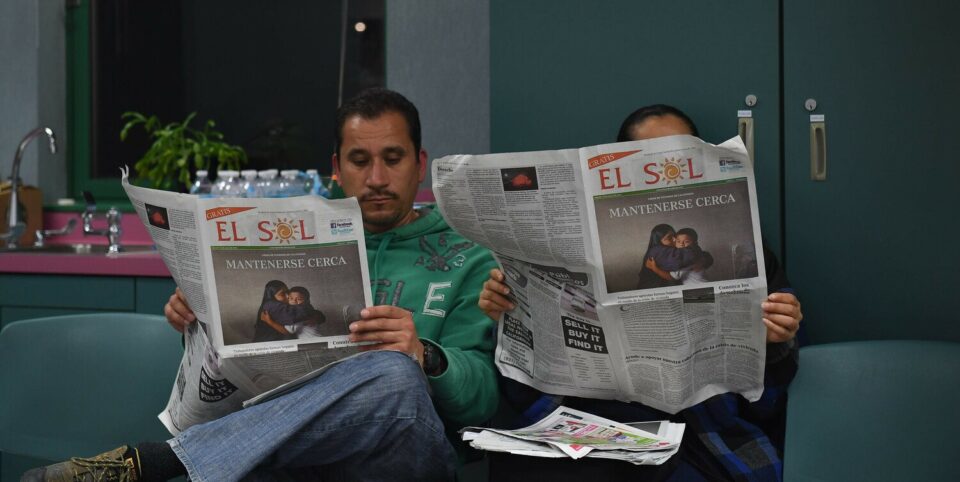More Hustle, Ingenuity Urged to Counter Angst
Journal-isms Roundtable photos by Sharon Farmer/sfphotoworks
Homepage photo: CatchLight’s earliest community engagement events were designed around “Staying Close,” a long-form reporting project by local Fellow Sebastían Hidalgo. Salinas farmworkers were invited to participate in a live survey with reporters and representatives from housing resources. Their input informed both the published story and the production of bilingual tenants rights materials that were distributed throughout the community. (Credit: David Rodríguez Muñoz for The Californian / CatchLight Local)
Also from this Journal-isms Roundtable: J-Group Says Hedge-Fund Papers Unwelcome
Support Journal-isms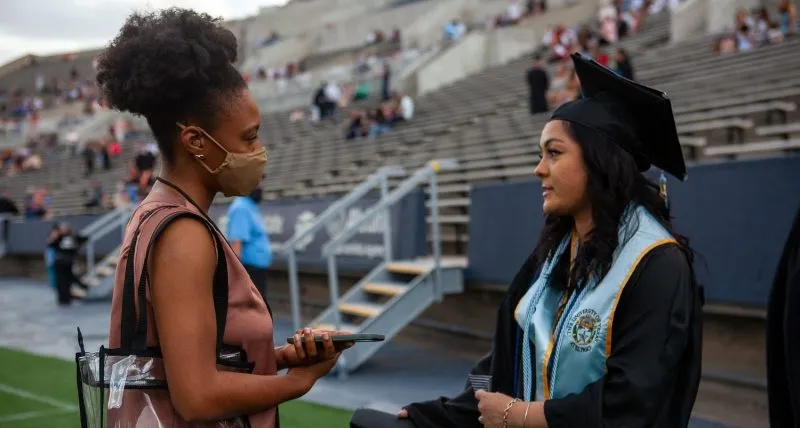
More Hustle, Ingenuity Urged to Counter Angst
By Isaiah Jerome Lewis Poole
As a a fresh wave of layoffs in the news industry sparks a sense of “existential dread” among journalists, the best advice that a group of news industry leaders at a Journal-isms Roundtable on the state of the news industry could offer journalists for keeping their careers above water was to bring more hustle and ingenuity to their work.
While the central question of the Roundtable was “what journalists can do to survive the collapse of the traditional business models,” it was the models themselves that got the most attention, as well as the systemic changes that might need to take place for the industry to regain its strength.
“I think what journalists have to do is build their brand” and “take control of their destiny,” said Eric Ortiz, executive director of the Strong Mind Strong Body Foundation and author of the recent article, “5 Ways Newspapers Can Make Money.” “Start your own newsletter, start your own podcast, you know; you have the skills, you have to build the brand. Get on LinkedIn if you’re not there and start networking.”
For those who take those steps, “if you can provide valuable information, people will value that and pay for that.”
Ortiz, who is also director of local and college news for Spotlight Media Labs, a new digital startup, was part of a panel that included Hermione Malone, head of emerging markets at the American Journalism Project, Danielle Coffey, president and CEO of the News/Media Alliance, the chief organization of newspaper publishers; Tracie Powell, CEO of The Pivot Fund, a venture philanthropy organization that invests in independent BIPOC-led community news operations, and Elodie Mailliet-Storm, CEO of CatchLight, an organization that supports visual journalism.
Fifty people were on the Feb. 27 Zoom, with 235 having watched on Facebook as of Sunday evening, and 54 more on YouTube. You can watch the recording embedded above or on this YouTube page.
The Roundtable took place just as The New York Times was preparing to publish an article by business reporter David Streitfeld headlined “How the Media Industry Keeps Losing the Future.”
The article featured former Knight-Ridder news executive Roger Fidler, who in the 1990s tried to pioneer ways to deliver news profitably online, only to see the industry outflanked by upstarts such as Craigslist, Facebook and Amazon.
A recent study by Northwestern University concluded that by the end of this year, the U.S. will have lost one-third of the daily and weekly newspapers in existence in 2005.
 Leading off the discussion was Kevin Merida (pictured), the former executive editor of the Los Angeles Times. He left the newspaper in January after a series of disputes with its owner, Patrick Soon-Shiong, including over how to stem losses at the publications that led to the paper announcing a roughly 20 percent cut in its newsroom staff.
Leading off the discussion was Kevin Merida (pictured), the former executive editor of the Los Angeles Times. He left the newspaper in January after a series of disputes with its owner, Patrick Soon-Shiong, including over how to stem losses at the publications that led to the paper announcing a roughly 20 percent cut in its newsroom staff.
Merida did not discuss details of his departure, but he did share thoughts on what media organizations should prioritize that came up repeatedly during the two-hour event.
“It’s important for news organizations to get closer to the customer,” Merida said. “That’s as big as anything. We’ve got to deliver work that they want and deliver it in ways that they want it and really, really pay attention to that and not be so caught in convention and be afraid to change exactly how we deliver it and present it.”
The news media crisis is not just financial, Merida said. “If people don’t buy something, there’s a reason they don’t buy it . . . We’ve got to pay attention to that.”
Merida later wrote in the chat, in response to a question about what a news organization could do if it had 10 million subscribers but no ad revenue, that he didn’t think “digital success or creating/maintaining a self-sustaining news organization requires 10 million subscribers. We have to rethink the idea of equating success with scale.”
Merida’s comments set the tone for a discussion that veered into larger questions of how news enterprises could regain traction in the marketplace — and keep journalists employed.
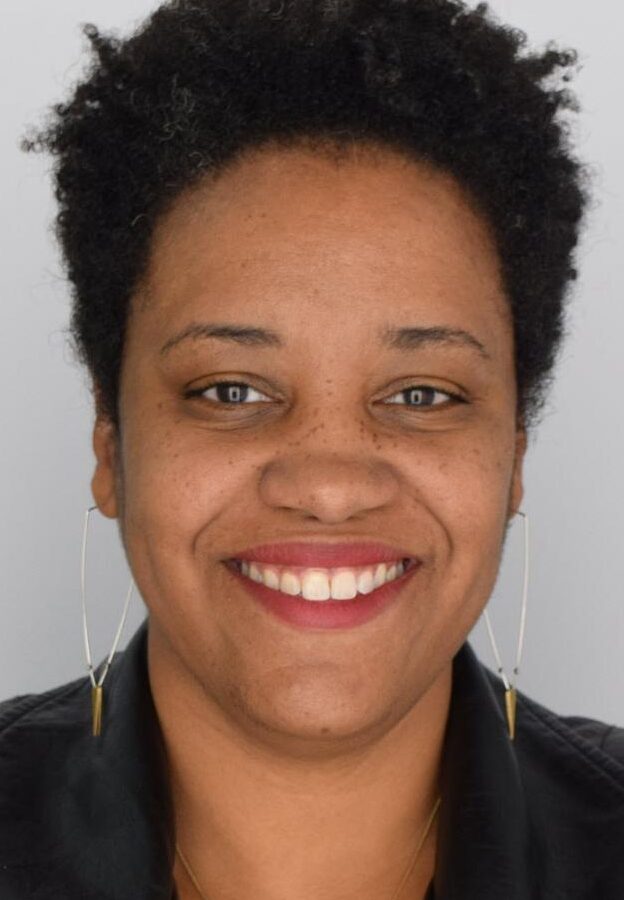 “There are no silver bullets,” Malone (pictured) said. “While we’re putting all of our chips in nonprofit local newsrooms, the truth is there is no one way that works. The success of the sector is going to take all innovative ideas and models working together.”
“There are no silver bullets,” Malone (pictured) said. “While we’re putting all of our chips in nonprofit local newsrooms, the truth is there is no one way that works. The success of the sector is going to take all innovative ideas and models working together.”
News consumers are increasingly relying on brands and what they represent, Coffey said. “That’s a big piece that I’m hearing a lot about lately, especially as we transition to the digital marketplace because that’s what follows, that’s where people will continue to recognize the reliable brand and the credibility and the integrity especially as trust becomes a big issue.”
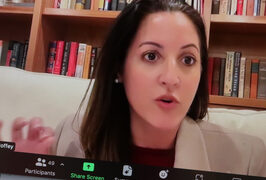 Studies show that local news coverage that holds government accountable and informs people about their communities still earns a high level of trust. “We’re not making something that people don’t want. It’s just [that] it has to exist in this new environment,” Coffey (pictured) said. “I think that people are being more innovative and experimental than we get credit for. But in this digital marketplace, we don’t have a broken product. We have a broken marketplace.”
Studies show that local news coverage that holds government accountable and informs people about their communities still earns a high level of trust. “We’re not making something that people don’t want. It’s just [that] it has to exist in this new environment,” Coffey (pictured) said. “I think that people are being more innovative and experimental than we get credit for. But in this digital marketplace, we don’t have a broken product. We have a broken marketplace.”
A key example is that producers of music and other forms of entertainment get royalties for their work under legally enforceable contracts each time their work is read, watched or listened to, but news organizations and journalists usually don’t.
Also, the digital distribution channels that news organizations rely on compete directly with those organizations for ad dollars and are in a position to restrict the ability of those news outlets to reach their audience. Tech companies’ use of news content to train artificial intelligence models, and then releasing programs that can deliver that content through search engines, or generate new content and replace writers in the process, is the latest subject of legal fights between the news industry and Silicon Valley.
“You know, it’s, it’s hard sometimes to hear about how we need to do better and get the return by improving our product,” Coffey said later during the Roundtable. “We should improve our product because we should improve our product. But in the music industry. everybody gets paid a nickel when you have your song playing in the elevator, everybody, no matter who you are, no matter how good your product is.” If artists want to earn more, they can earn money through tours or movie rights, “but nobody’s telling Beyoncé to sing better. You know, she has an expectation. She gets to get paid just like every indie artist or any individual does.”
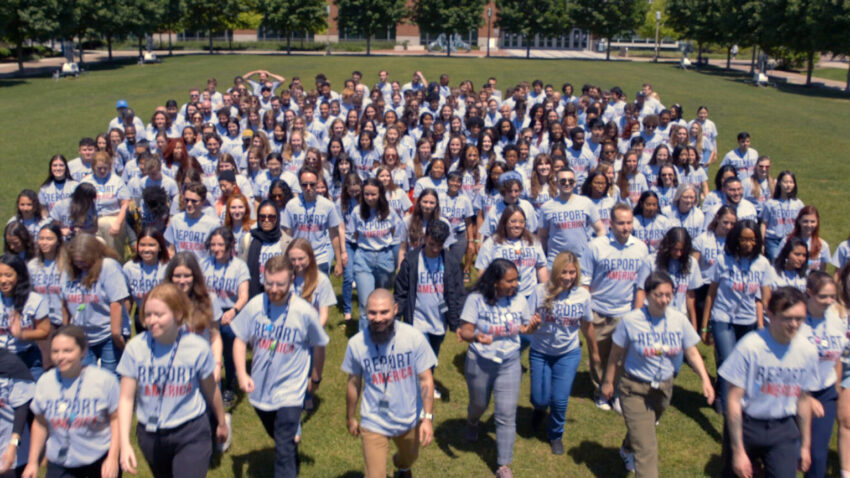
The News/Media Alliance is championing laws, such as one just passed in Indonesia, that would require social media companies to compensate news organizations for the use of their content on their sites. A bill pending in Congress would allow news organizations in the United States to bargain collectively with social media platforms to receive compensation for use of their content. These laws are vehemently opposed by the social media platforms; Facebook has just responded to a similar law in Australia by shutting down its news tab and ending $70 million payments to news organizations.
Malone, whose venture philanthropy organization has given more than $55 million in grants to 44 nonprofit news organizations, said she is bullish on the nonprofit news model — a sector that has grown from 16 outlets in 2010 to more than 440 today. But, she cautioned, “nonprofit incorporation is a tax designation, not the business model. The money doesn’t simply magically appear because an organization incorporates as a nonprofit. So having a strong business model with diversified revenue sources, and a product that’s really meeting the complexities of communities in ways that are accessible is critical to the success. These are, after all, businesses, so as much as they need strong editorial leadership, they also need strong business operations leadership.”
That said, an advantage found by leaders who step into nonprofit news organizations is that they are often mission-driven, Malone said, “and the mission of their organizations, whether it’s driven by uncovered beats or undercovered beats, or fuller, more complete storytelling of historically marginalized communities, that mission helps elevate the meaning of the work for so many and allows them to to not only survive, but thrive, even amid a lot of the chaos that we see in the industry.”
 Powell (pictured) has launched The Pivot Fund as “a new venture philanthropy organization dedicated to investing $500 million into independent BIPOC-led community news,” with “BIPOC” meaning “Black, Indigenous People of Color.” But before that, in 2019, Powell launched the Racial Equity in Journalism (REJ) Fund, a project of Borealis Philanthropies that funds news media organizations led by people of color. What she quickly learned, she said, was that while money was essential, it was not sufficient. “I realized that these dollars needed to be accompanied by capacity building services, coaching, mentoring, but also technology and legal support.”
Powell (pictured) has launched The Pivot Fund as “a new venture philanthropy organization dedicated to investing $500 million into independent BIPOC-led community news,” with “BIPOC” meaning “Black, Indigenous People of Color.” But before that, in 2019, Powell launched the Racial Equity in Journalism (REJ) Fund, a project of Borealis Philanthropies that funds news media organizations led by people of color. What she quickly learned, she said, was that while money was essential, it was not sufficient. “I realized that these dollars needed to be accompanied by capacity building services, coaching, mentoring, but also technology and legal support.”
That led Powell to step down from REJ in 2021 and launch The Pivot Fund with a somewhat different approach. ”One of the things that The Pivot Fund does differently from other funders is that we start with community members. We start by asking them questions about who they trust for news and information. Where did they turn to in times of crisis, such as a pandemic? How do they access the information and then what do they do with it once they have it?” The Pivot Fund then vets those sources with a view toward helping them build their capacity.
One such outlet the fund has been examining is the Instagram feed ATLScoop, which “co-creates news and information along with its community members,” Powell said. Instagram records the page as having 870,000 followers. “Compare that to the Atlanta Journal Constitution, which is the flagship newspaper for the state of Georgia, with 120,000 subscribers between both print and digital” (and 187,000 followers on Instagram). So The Pivot Fund looks at something like that and sees potential, maybe not for direct funding support but a definite collaboration with an organization like the AJC, and interestingly enough, I know now the AJC is sharing its content with ATLScoop.”
When pressed to address the question of what journalists worried about keeping their jobs should do, Powell said, “There is a disconnect between communities and journalism and journalists. And so if we want to remain relevant, if we want to survive and indeed, thrive, we have to shorten that distance with the communities that we’re supposed to be serving.”
The organizations that The Pivot Fund supports, she added, are generating enough revenue to support small staffs. So if reporters are worried about their job stability, “perhaps they should go talk to some of the newsrooms we support.”
Later in the discussion, Powell stressed that she is “in the business of trying to save news,” a proposition “very different from trying to save a newspaper or a TV station,” which in some cases might not be worth the trouble. “Some of these brands don’t have any value, at least in the community. The brand value in the community is crap because so much harm has been created in the community by that newspaper brand. So a lot of the pieces of old-line journalism, old line newspapers that have produced harms in the community, I’m not missing that at all. That can die.”
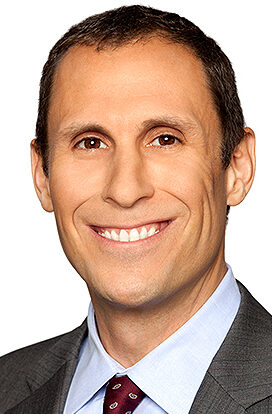 Ortiz (pictured) said that there are parallels between the skills required for community-building and for journalism. He said journalists and news outlets should “go back to that old-school way of doing journalism” that “starts with community engagement, and really engaging in the community, actively listening to community, and not just sending out a digital survey, not just calling on the phone, not just doing a video call, but going out in the community physically, you know, shaking hands, looking people in the eye and rebuilding that trust.”
Ortiz (pictured) said that there are parallels between the skills required for community-building and for journalism. He said journalists and news outlets should “go back to that old-school way of doing journalism” that “starts with community engagement, and really engaging in the community, actively listening to community, and not just sending out a digital survey, not just calling on the phone, not just doing a video call, but going out in the community physically, you know, shaking hands, looking people in the eye and rebuilding that trust.”
One way that approach would help is by attracting a younger audience that is not showing interest in news, he said. “First, you get them interested, you teach them and guide them how to solve problems and how to use their voice to advocate for change.” An example Ortiz cited is an after-school journalism program at the Ella Baker Middle School in Minneapolis in which participants are part of a “community solutions team.” “We’re going to see if we can partner we have some local media partners to amplify their voices,” he said.

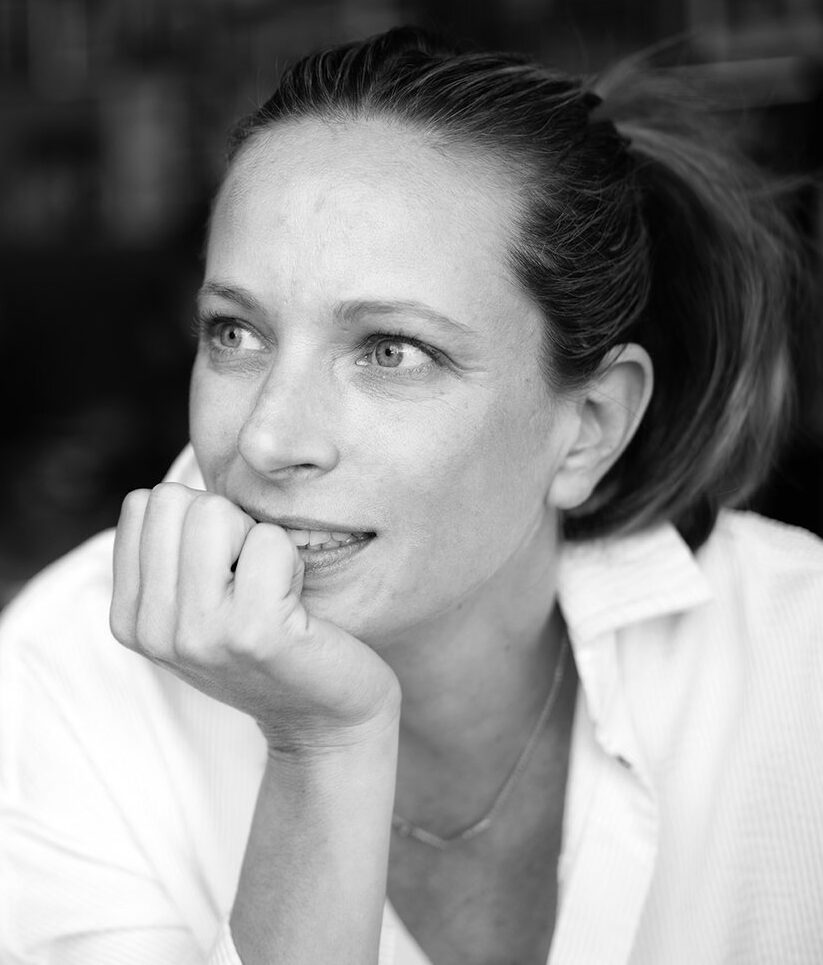 Mailliet-Storm (pictured) said that even as visual storytelling has become more important in the digital realm, newsrooms have lost more than half of the visual journalists they employed in 2009. Her organization, CatchLight, is using a collaborative model that enables publications to share resources, talent and ideas. While most of the participating newsrooms are in California, Malliet-Storm said the organization aims to be national across 30 newsrooms by 2027. But, as she noted, that is in the context of a reality in which people working as visual journalists are having to sustain themselves by working other jobs. So she, too, wrestles with the question of “how do you build audience so then that audience can turn into some form of monetization opportunity?”
Mailliet-Storm (pictured) said that even as visual storytelling has become more important in the digital realm, newsrooms have lost more than half of the visual journalists they employed in 2009. Her organization, CatchLight, is using a collaborative model that enables publications to share resources, talent and ideas. While most of the participating newsrooms are in California, Malliet-Storm said the organization aims to be national across 30 newsrooms by 2027. But, as she noted, that is in the context of a reality in which people working as visual journalists are having to sustain themselves by working other jobs. So she, too, wrestles with the question of “how do you build audience so then that audience can turn into some form of monetization opportunity?”
Amid the challenges and hard work facing people trying to cut a path to a constructive and profitable future for the news industry, participants offered some encouragement.
“I just encourage journalists across the country when I’m talking to them to take care of themselves,” Malone said. “So many of us experience burnout at legacy media. But that is not something that can’t show up in the nonprofit sector as well. I think so many of the newer nonprofit media leaders have committed to leaving behind a lot of that toxicity and some of those degrading practices and although this work is important, even so is the wellbeing of the teams that provide news coverage to us.”
“I would just say for those folks who have a job in journalism to hang in there,” Kleman said. “They are doing critical work, and local journalism is not dead. We’re just all in this process of figuring out what’s going to work here what works there, what business model is right for this particular kind of publication. But I would also say, maybe if you have been laid off or you’re looking for another position, to really consider newsrooms that maybe you wouldn’t have before and maybe are out of your comfort zone because with so many news holes around the country, if you’re a decent journalist, you’re going to find great stories, no matter where you go.”
The Roundtable earned kudos from participants and viewers, but some added caveats. Rebecca Aguilar, 2021-2022 president of the Society of Professional Journalists, wrote afterward, “As journalists we need to keep evolving and be prepared for the unexpected. We need to look into starting a nonprofit or newsletters that can make us money. We need to learn from those on social media who make money from their content, but apply it to our work.”
But others who tuned in were not fully satisfied that they got what they needed to hear.
“There was a lot of what I call ‘social work talk’ last night and not enough hard-nosed, how are we going to save this industry, not to mention salvage the role that journalism plays in sustaining democracy,” said another veteran journalist.
“It was a great night of excellent speakers,” said Eleanore Vega, Diversity & Inclusion Committee chair of the. Society of Professional Journalists, “I think you need to do a part two on the subject. There are so many issues we barely scratched the surface on.”
To subscribe at no cost, please send an email to journal-isms+subscribe@groups.io and say who you are.
Facebook users: “Like” “Richard Prince’s Journal-isms” on Facebook.
Follow Richard Prince on Twitter @princeeditor
Richard Prince’s Journal-isms originates from Washington. It began in print before most of us knew what the internet was, and it would like to be referred to as a “column.” Any views expressed in the column are those of the person or organization quoted and not those of any other entity. Send tips, comments and concerns to Richard Prince at journal-isms+owner@
View previous columns (after Feb. 13, 2016).
View previous columns (before Feb. 13, 2016)
- Diversity’s Greatest Hits, 2018 (Jan. 4, 2019)
- Book Notes: Is Taking a Knee Really All That? (Dec. 20, 2018)
- Book Notes: Challenging ’45’ and Proudly Telling the Story (Dec. 18, 2018)
- Book Notes: Get Down With the Legends! (Dec. 11, 2018)
- Journalist Richard Prince w/Joe Madison (Sirius XM, April 18, 2018) (podcast)
- Richard Prince (journalist) (Wikipedia entry)
- February 2018 Podcast: Richard “Dick” Prince on the need for newsroom diversity (Gabriel Greschler, Student Press Law Center, Feb. 26, 2018)
- Diversity’s Greatest Hits, 2017 — Where Will They Take Us in the Year Ahead?
- Book Notes: Best Sellers, Uncovered Treasures, Overlooked History (Dec. 19, 2017)
- An advocate for diversity in the media is still pressing for representation, (Courtland Milloy, Washington Post, Nov. 28, 2017)
- Morgan Global Journalism Review: Journal-isms Journeys On (Aug. 31, 2017)
- Diversity’s Greatest Hits, 2016
- Book Notes: 16 Writers Dish About ‘Chelle,’ the First Lady
- Book Notes: From Coretta to Barack, and in Search of the Godfather
- Journal-isms’ Richard Prince Wants Your Ideas (FishbowlDC, Feb. 26, 2016)
- “JOURNAL-ISMS” IS LATEST TO BEAR BRUNT OF INDUSTRY’S ECONOMIC WOES (Feb. 19, 2016)
- Richard Prince with Charlayne Hunter-Gault, “PBS NewsHour,” “What stagnant diversity means for America’s newsrooms” (Dec. 15, 2015)
- Book Notes: Journalists Follow Their Passions
- Book Notes: Journalists Who Rocked Their World
- Book Notes: Hands Up! Read This!
- Book Notes: New Cosby Bio Looks Like a Best-Seller
- Journo-diversity advocate turns attention to Ezra Klein project (Erik Wemple, Washington Post, March 5, 2014)

